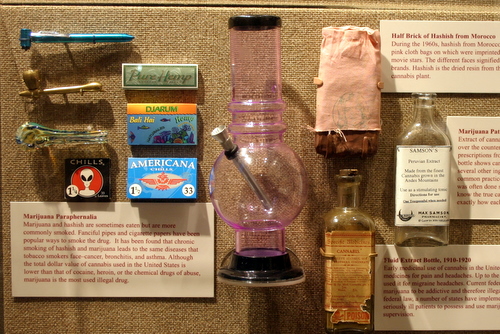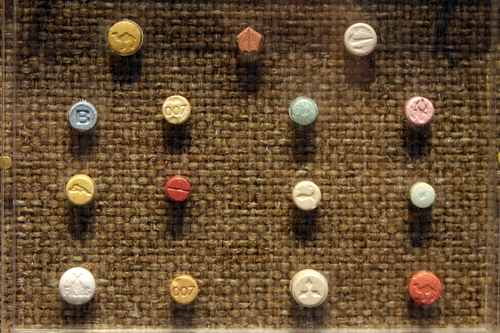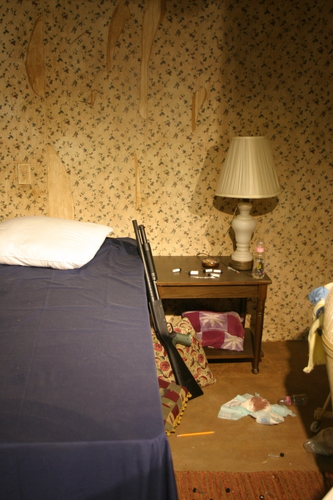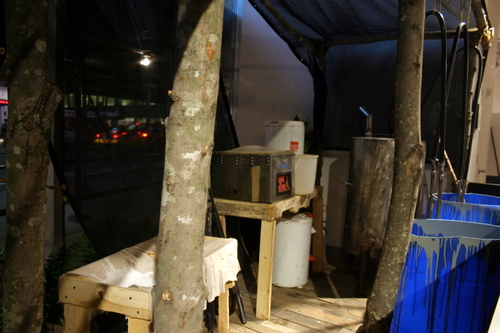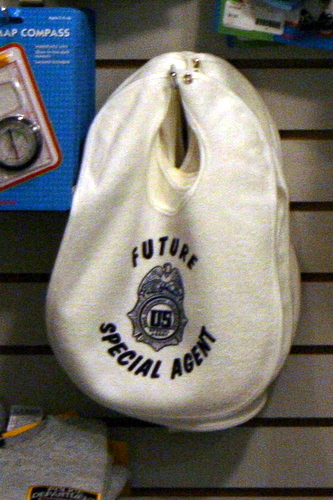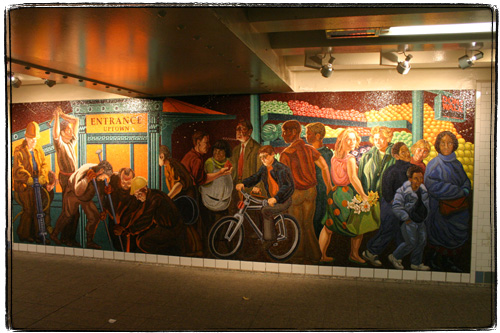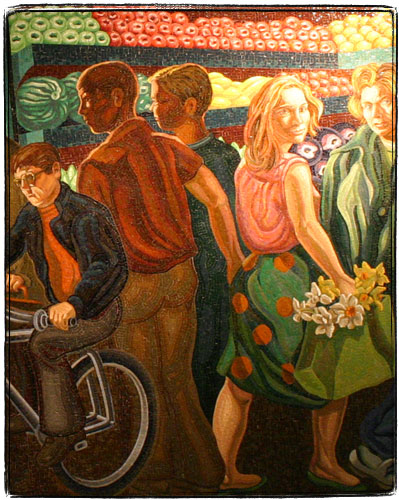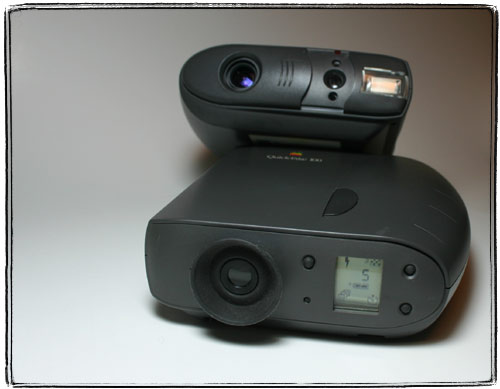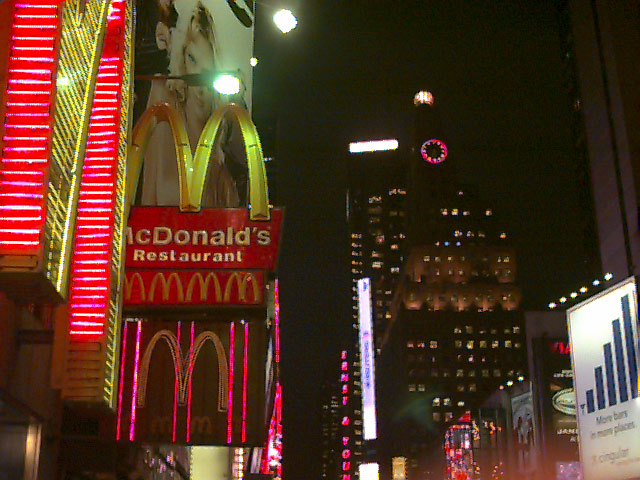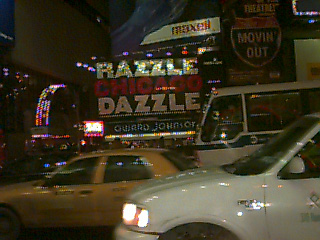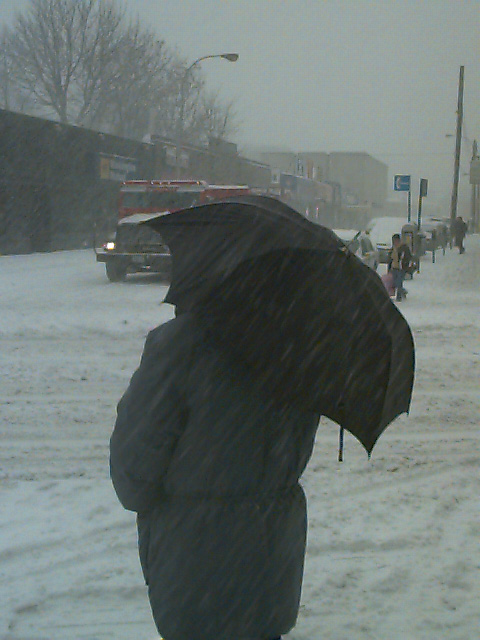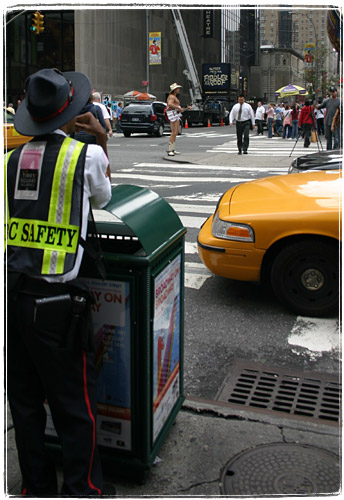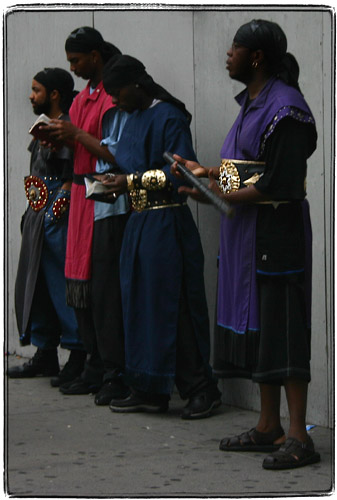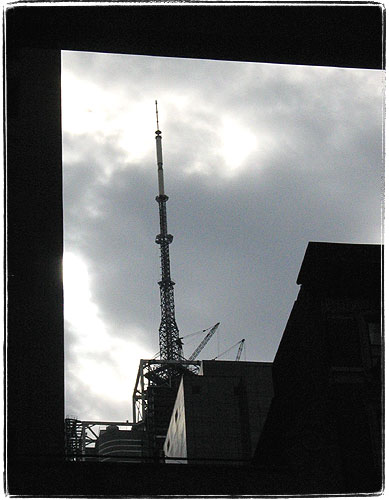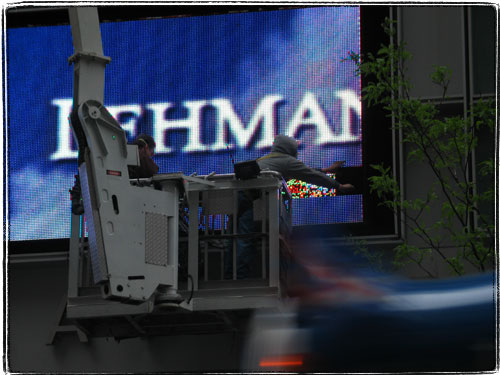New York is like a hot girl in high school. One that’s easy to love, easy to hate, and easy to pretend that you don’t care about at all (since she does not notice you anyway). New York is beautiful, ugly, cruel and kind — all at the same time. They are both high maintenance and high rent.
My high school experience was surprisingly non-traumatic. I never tried to pretend to be someone I’m not, to hide my geekiness and foreignness. Strangely enough that made me feel like I actually fit in, even though I probably did not. And while I “missed my chance” in high school, my love affair with New York City is going strong.
Side Note: my high school’s only famous alumni is Larry David, creator of Seinfeld and the inspiration for the character of George Costanza.
Tourists to New Yorkers are what geeks and nerds are to jocks. This highly insensitive sign in front of the currently inaccessible to the public lobby of the Woolworth Building.

I spent the last 14 years in New York, but to this day I have not lost the feeling of being a tourist. I constantly carry a brick of a camera with me (mostly in my bag, but often on a strap around my neck) and gawk at the skyscrapers. Most of my co-workers avoid Times Square like the plague because of all the slow moving tourists. I, on the other hand, feel at home there.
If the tourist is the lowest of New York’s inhabitants, there’s even more gradation. New York is not just Manhattan. There are 4 other boroughs plus Long Island and New Jersey, denizens of which can only reach Manhattan via a bridge or a tunnel and are collectively known as “the bridge and tunnel crowd” . The moniker is not precise — there are four other ways to reach the city the I know of: ferry, water taxi, helicopter taxi, and Roosevelt Island Tram. I am a proud bridge and tunneler as well.
One of my first jobs in Brooklyn was circular delivery — those annoying little advertisement newspapers that you find wedged into your door or mailbox. I spent a lot of time methodically crisscrossing Brooklyn’s street grid, visiting many different neighborhoods. I used to mark the street map that I visited to make sure that I covered the area that I was supposed to cover. I wonder if they use GPS to insure that the delivery men cover their area now. There are few things that I like more than walking Manhattan’s streets, watching people and arhitecture and taking pictures.
I am thinking of two projects. First – visiting every single street in Manhattan with the help of GPS. I believe that this was done already, as well as my ongoing (but mostly unpublished NYC Tarot photography project). But secondly, I want to take a series of photographs from the middle of Manhattan’s street intersections – there’s something about the view of NYC’s streets from the intersections that fascinates me, and it’s a view that few people explore.

